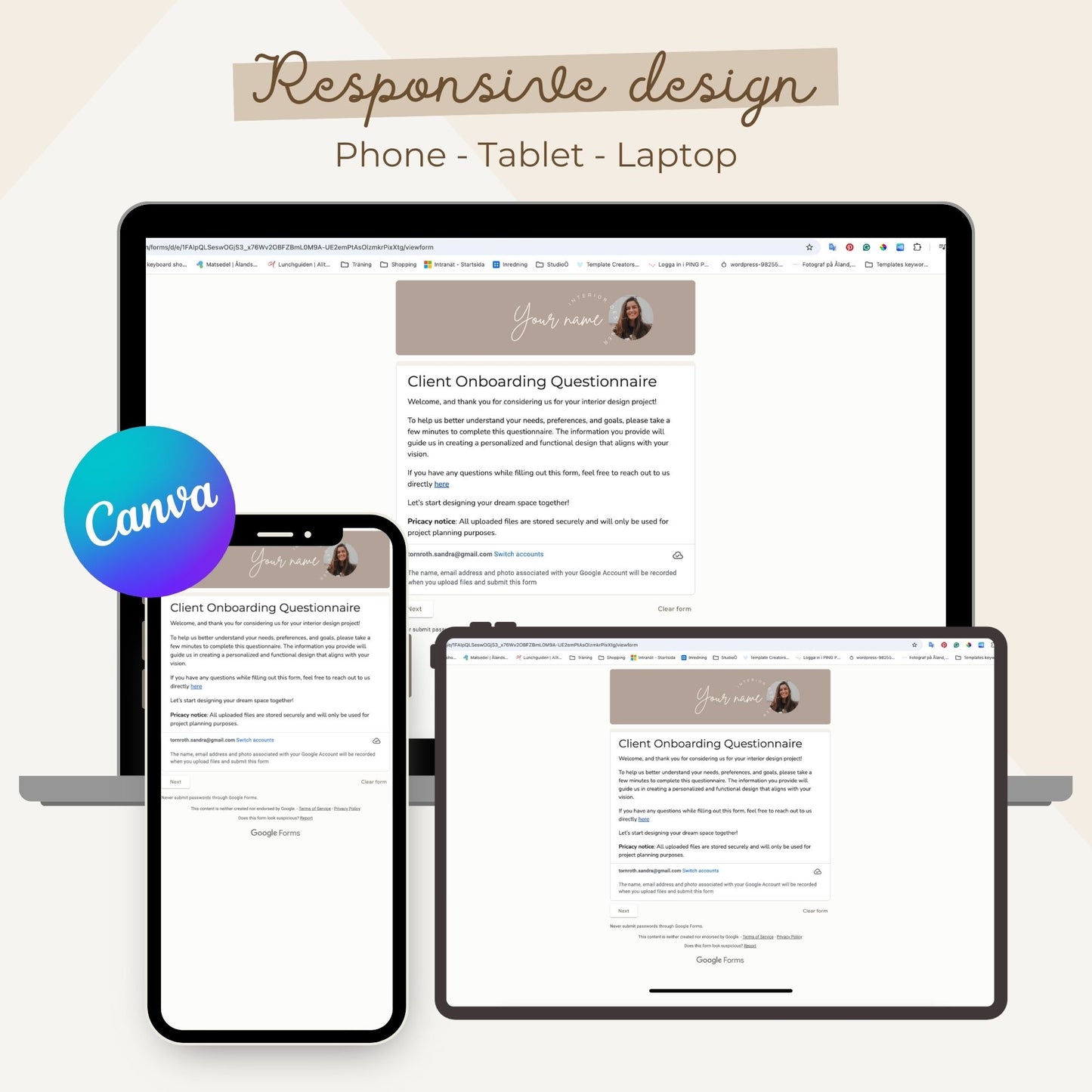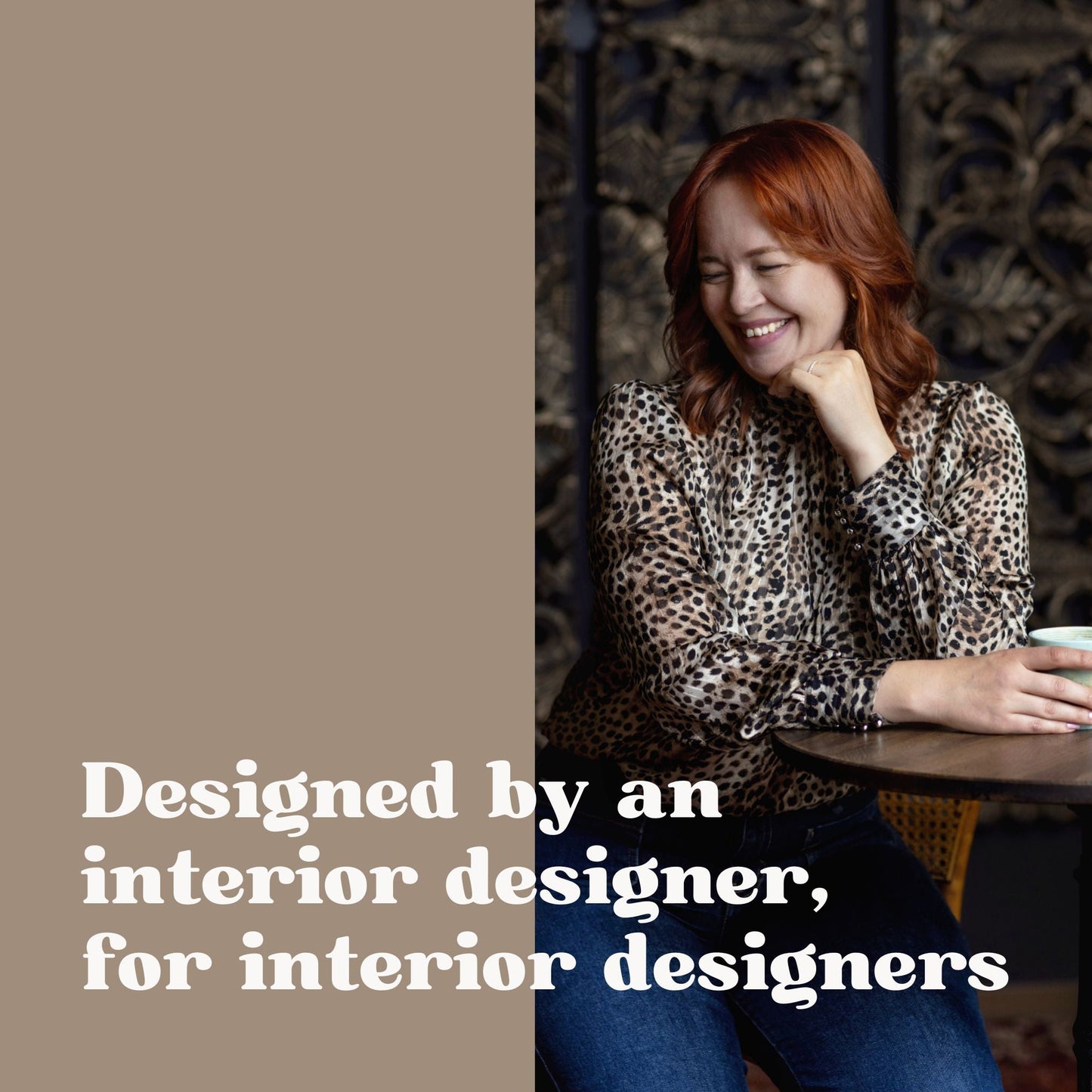
7 Essential Questions To Ask Interior Design Clients (And How to Use Them to Nail Every Project)
Share
Starting your journey as an interior designer can feel thrilling — and let’s be honest, a little nerve-wracking too. Meeting a client for the first time is your golden opportunity to set the tone for a project, build trust, and uncover the details that turn a good design into an unforgettable one.
But what questions should you ask to make sure you and your client are on the same page from the start?
Don’t worry — I’ve got you covered.
In this post, you’ll learn the 7 essential questions every new interior designer should ask their clients — and how using a simple tool like the Interior Design Client Intake Form by Palette and Blueprint can make the entire process seamless and professional.
1. What’s Your Vision for This Space?
Why it matters:
Every client has a dream — even if they struggle to describe it. Asking them to share their vision opens the door to understanding their emotional and practical goals.
Pro Tip:
Listen closely not just to what they say but how they say it.
If a client says, "I want the living room to feel cozy and inviting," they may actually be craving a space where they can relax after a long day — not just a particular furniture style.
✅ Palette and Blueprint Tip:
Use your intake form to guide this conversation with prompts about emotions, adjectives, and lifestyle keywords to really dig deep.

Take a look here: Intake Form for Residential and Commerical projects
2. How Will You Use This Space Day-to-Day?
Why it matters:
A gorgeous room is useless if it doesn’t work for the way a client lives. Functionality and beauty go hand-in-hand in truly successful interior design.
Examples:
- Does the family entertain often?
- Is the space meant to be child- or pet-friendly?
- Does it need to double as a work-from-home office?
How your Intake Form helps:
Capture this vital info early so you can recommend solutions that are stylish and practical.
3. What Styles, Colors, and Materials Do You Love (or Hate)?
Why it matters:
New designers often assume a client will love a look — only to find out they hate mid-century modern furniture or can't stand the color navy. (Oops!)
Pro Tip:
Encourage clients to show you Pinterest boards, saved Instagram posts, or magazine clippings.
Ask directly about "dealbreaker" colors, textures, or trends — this saves you SO much time later!
✅ Bonus:
The Interior Design Client Intake Form includes space for clients to describe their loves and dislikes — making style preferences crystal clear.
4. What’s Your Budget (Really)?
Why it matters:
Budget conversations can feel awkward — but setting expectations upfront saves you (and your client) a lot of future heartache.
How to approach it:
- Be clear that budget transparency = the best possible outcome.
- Offer rough ranges: "For this type of full room redesign, projects typically start at $X and go up from there."
Pro Tip:
Your intake form can introduce this gently with a budget range checklist — allowing clients to think about numbers before you're even in the room. If you are unsure of how to price your services, I have a guide for you.
Get it here: Interior Design Pricing Guidelines

5. What’s Your Ideal Timeline?
Why it matters:
A dreamy space won't mean much if it's finished three months after a key event like a baby arriving or a holiday dinner party.
Questions to ask:
- Is there a deadline you're working toward?
- Are you open to adjusting the scope if delivery delays happen?
✅ Palette and Blueprint Tip:
Use your form to include a "Target Completion Date" field — it signals you're thinking about practicalities right from the beginning.
6. Who Makes the Final Decisions?
Why it matters:
Designing for a couple, a family, or even a committee can be tricky if it’s unclear who really approves selections and signs off.
Key questions:
- Is there one final decision-maker?
- Are there any others (partners, spouses, parents) who will weigh in?
How your Intake Form helps:
It prompts clients to list all stakeholders — so you aren’t blindsided when “Oh, my husband actually hates wallpaper” comes up late in the game. 😬
7. What’s Your Absolute Must-Have (or Dealbreaker)?
Why it matters:
Understanding the "non-negotiables" helps you prioritize during the design process — especially if tough budget or layout decisions pop up.
Examples:
- Must have: a home office space with storage.
- Dealbreaker: no open shelving in the kitchen.
Pro Tip:
Your form can offer a space to list “Must-Haves” and “Hard Nos” — making it super easy to reference later when creating concepts and mood boards.

Final Thoughts: Confidence Starts With the Right Questions
Starting a design project isn’t about dazzling your clients with mood boards right out of the gate — it’s about deeply understanding them.
By asking these 7 essential questions, you’ll build a strong foundation of trust, avoid costly misunderstandings, and set yourself up for a stunning finished project that your clients LOVE.
👉 Want to make client meetings even easier?
Get your hands on the Interior Design Client Intake Form from Palette and Blueprint.
It’s packed with thoughtfully crafted questions and prompts that will help you look like a pro, even if it’s your very first client meeting.
Here’s to creating beautiful spaces — and feeling confident doing it! 🎨🏡
Save this post! Bookmark it, share it with your designer friends, and keep it handy for your next project.
Got other questions you love to ask new clients? Drop them in the comments below — I’d love to hear!












